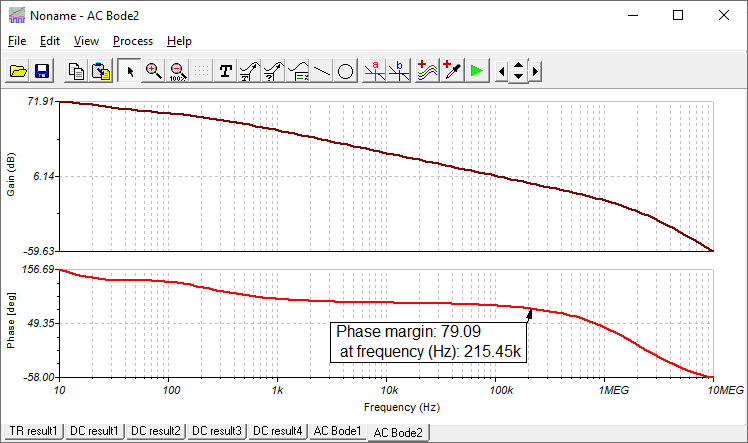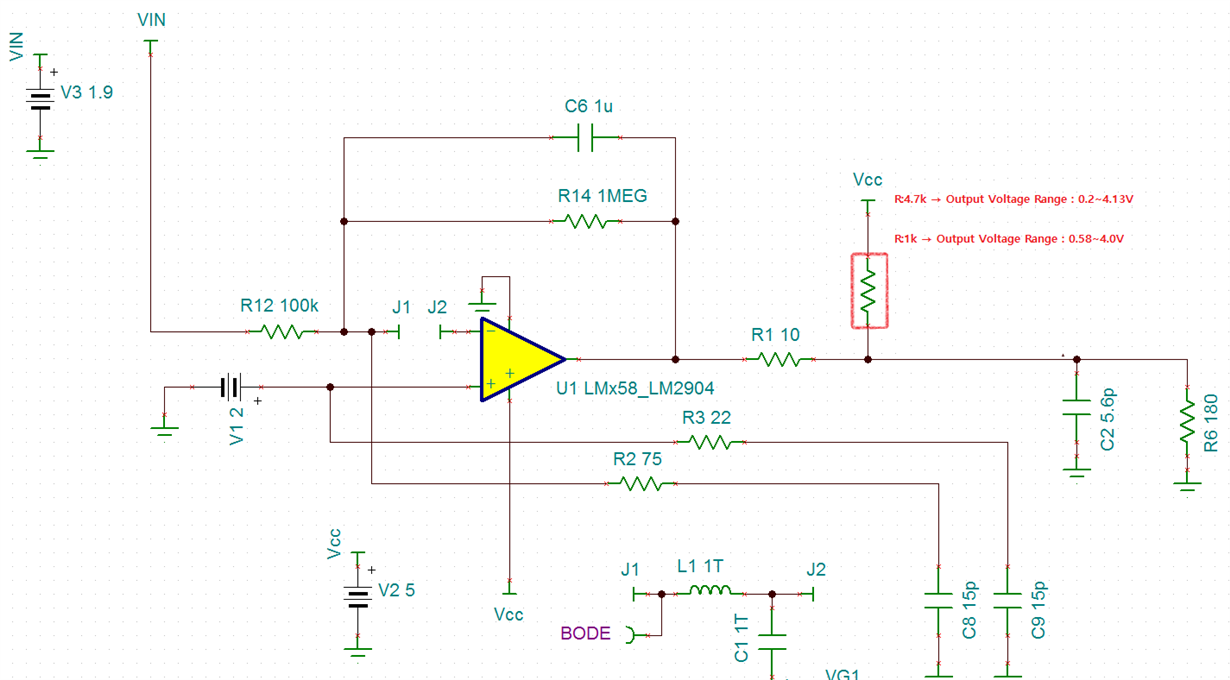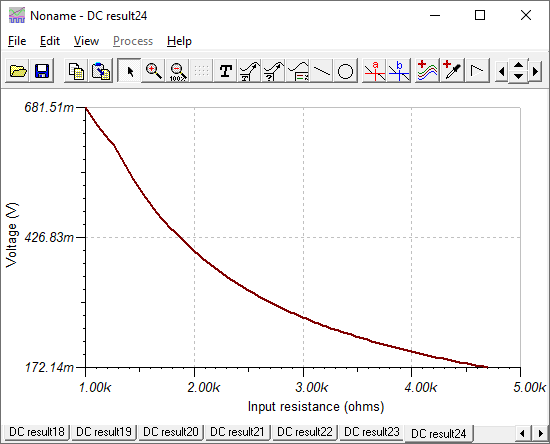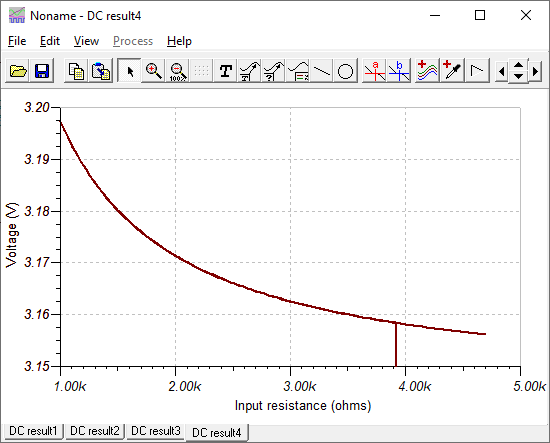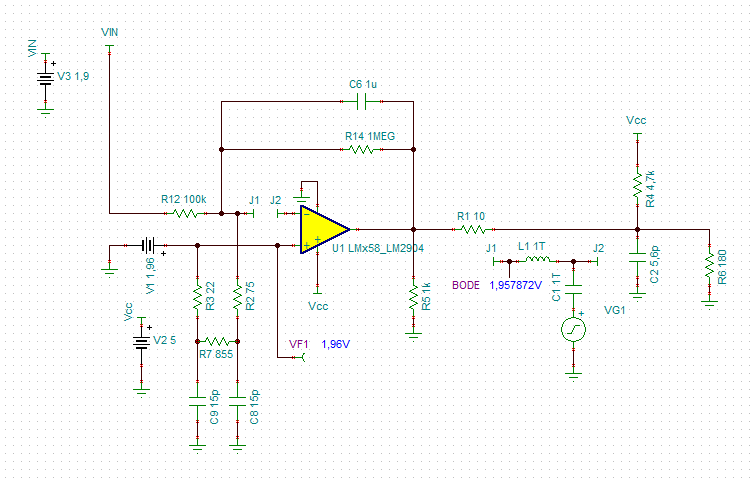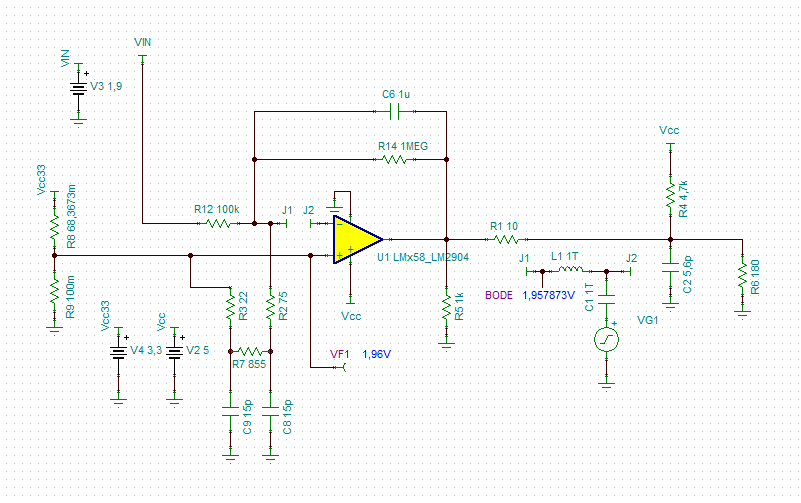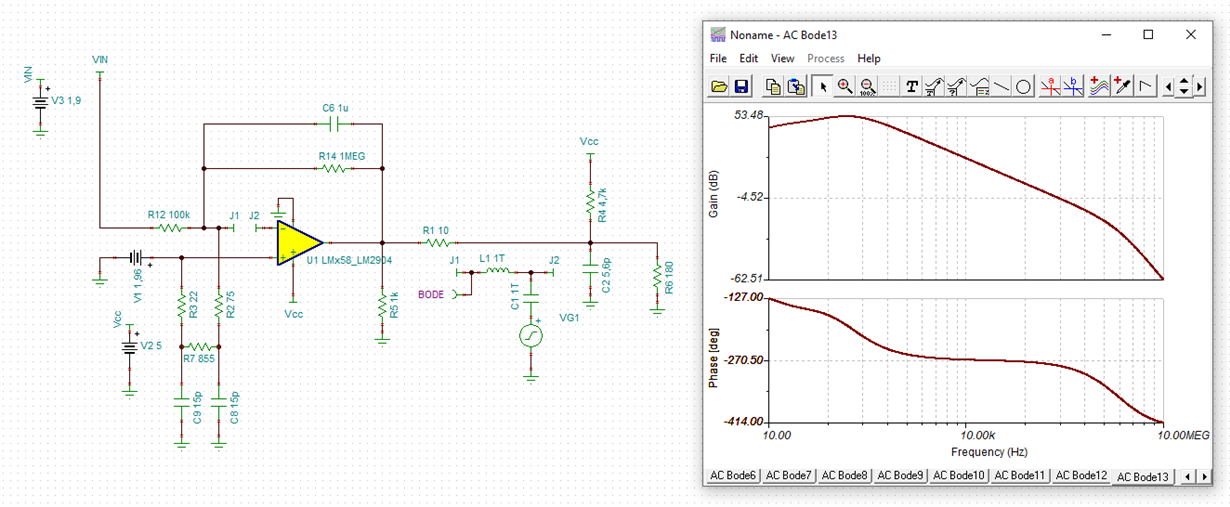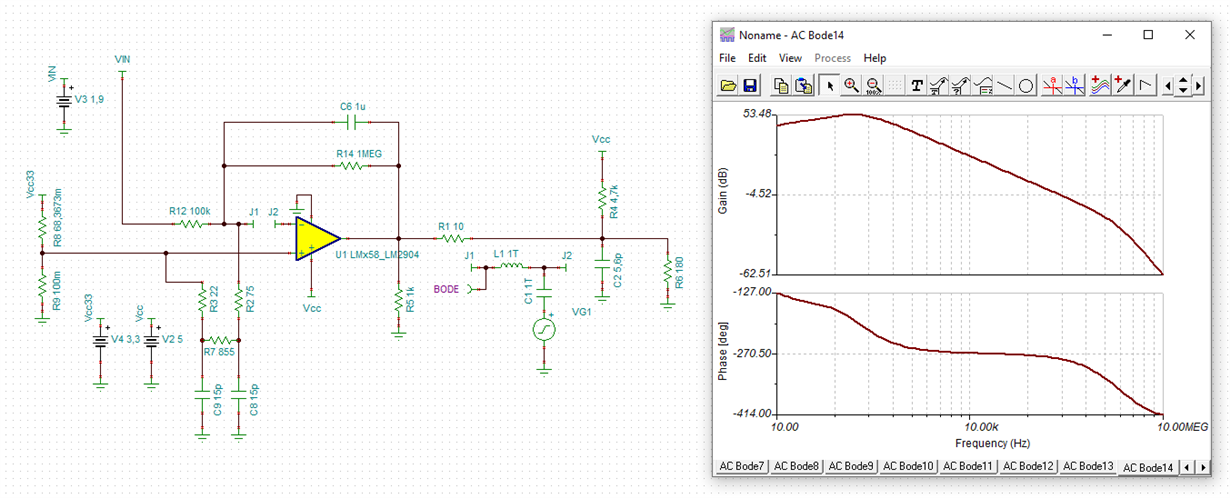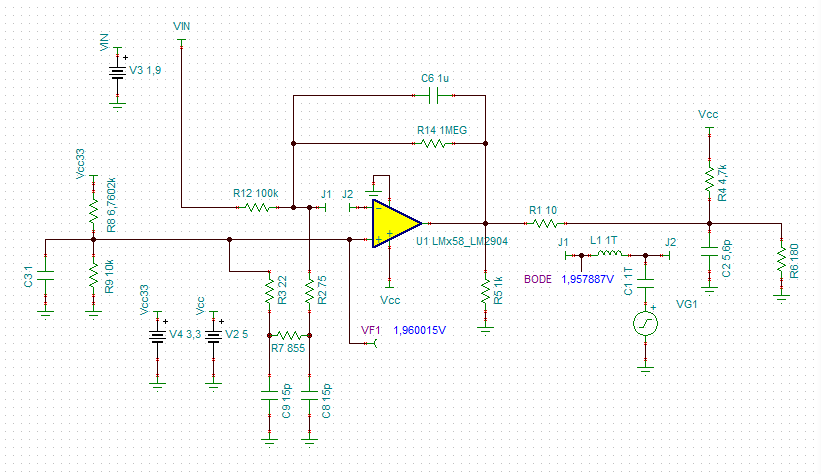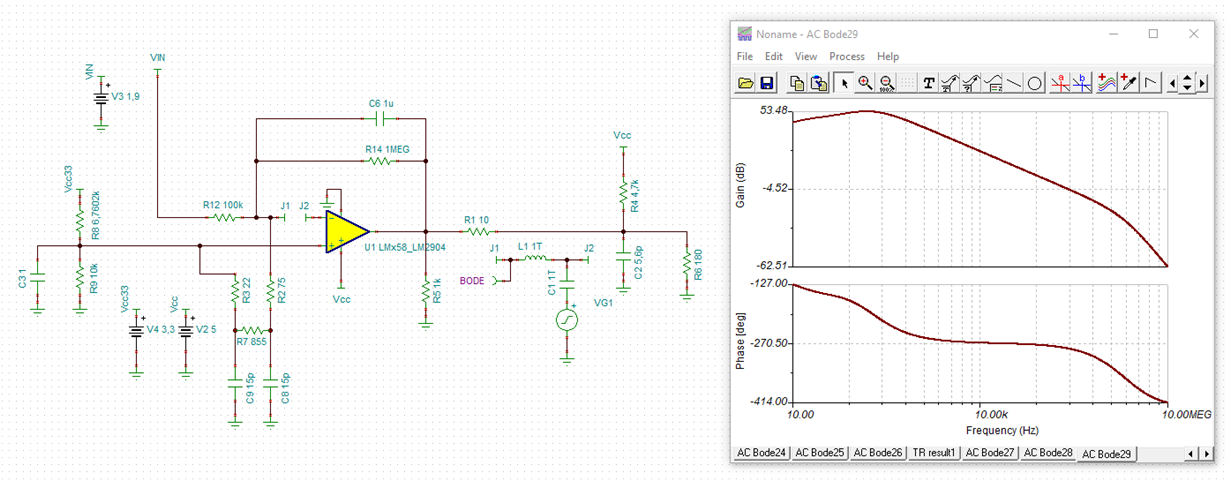Dear Team,
I'm developing a camera iris by completing the LM358.
The application part of the LM358 is the motor end of the iris.
Supply Voltage of LM358 is 5V, and DRIVE,DAMP load Resistance is (DRIVE:200ohm at 20 ℃, DAMP:900ohm at 20 ℃).
I will send you the reference circuit.
Please review the simulation to be sent.
In addition, we request DRIVE Voltage's phase margin simulation for stability of the circuit.
And I have additional questions, there is a 4.7k pull-up resistor on the drive output and 1k pull-down resistor on the secondary op-amp output.
It is judged that it is not insignificant to affect the output voltage because there is a high value resistor. I'm curious about your opinion.
Finally, do you think Ro (10ohm) is necessary for the operation of the circuit?
I asked the manufacturer of the ref circuit, but it did not give a definite answer.
Please tell me if you have any material you need.
Please reply. Thank you.
< TINA Simulation - using LM358>



